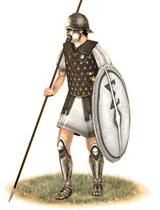MP, I think you know that during 4th century red figure vases started to disappear, with some of very bad style, and others super good, but with mithological/banquete scenes and extremaly rare.Originally Posted by MeinPanzer
Armour of any kind is extremely difficult to be found on vases from mid 4th century - this the reason why this type disappear also.




 Reply With Quote
Reply With Quote











Bookmarks